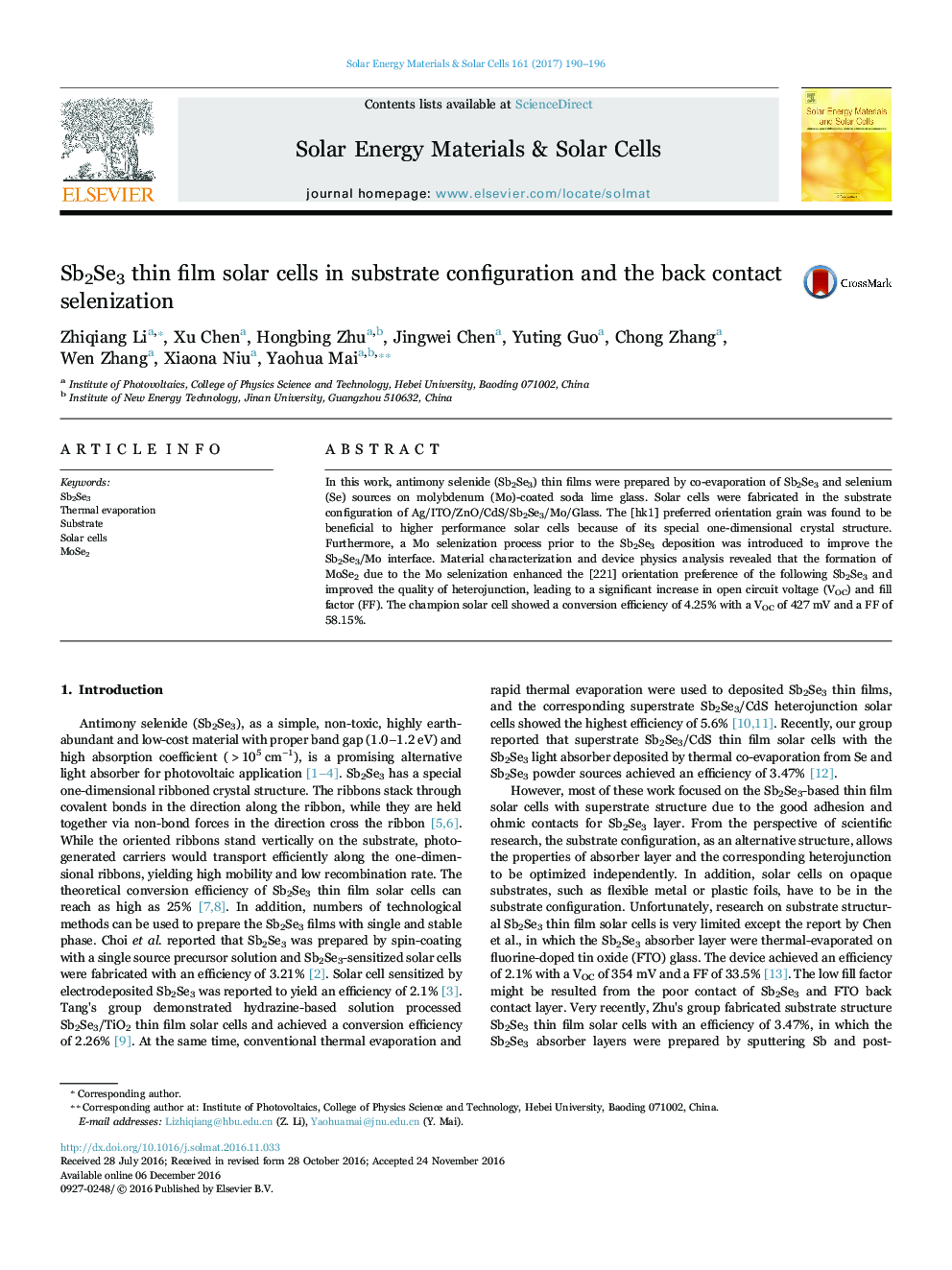| Article ID | Journal | Published Year | Pages | File Type |
|---|---|---|---|---|
| 6457004 | Solar Energy Materials and Solar Cells | 2017 | 7 Pages |
â¢The binary Sb2Se3 thin film solar cells were fabricated in the substrate configuration of Ag/ITO/ZnO/CdS/Sb2Se3/Mo/Glass.â¢The influence of substrate temperatures on Sb2Se3 thin films and solar cells were investigated systematically.â¢The roll-over behavior in light J-V characteristic disappeared after introducing a selenization process of Mo back contact prior to the deposition of Sb2Se3 absorber layer.
In this work, antimony selenide (Sb2Se3) thin films were prepared by co-evaporation of Sb2Se3 and selenium (Se) sources on molybdenum (Mo)-coated soda lime glass. Solar cells were fabricated in the substrate configuration of Ag/ITO/ZnO/CdS/Sb2Se3/Mo/Glass. The [hk1] preferred orientation grain was found to be beneficial to higher performance solar cells because of its special one-dimensional crystal structure. Furthermore, a Mo selenization process prior to the Sb2Se3 deposition was introduced to improve the Sb2Se3/Mo interface. Material characterization and device physics analysis revealed that the formation of MoSe2 due to the Mo selenization enhanced the [221] orientation preference of the following Sb2Se3 and improved the quality of heterojunction, leading to a significant increase in open circuit voltage (VOC) and fill factor (FF). The champion solar cell showed a conversion efficiency of 4.25% with a VOC of 427Â mV and a FF of 58.15%.
